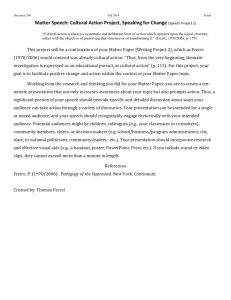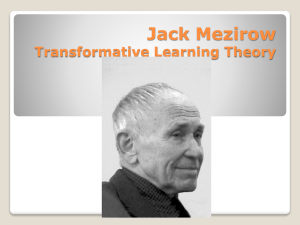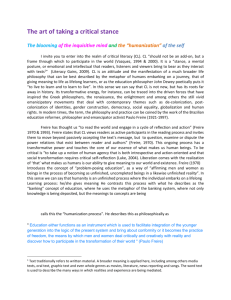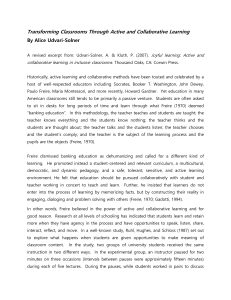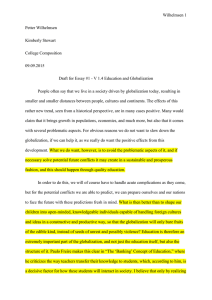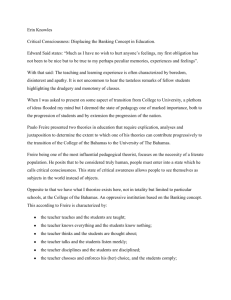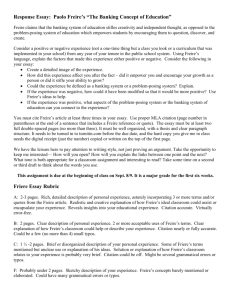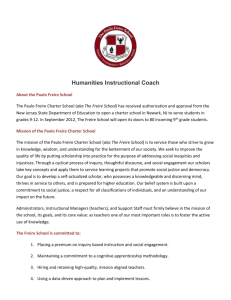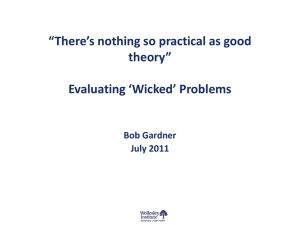Social Justice A Transformative Model
advertisement
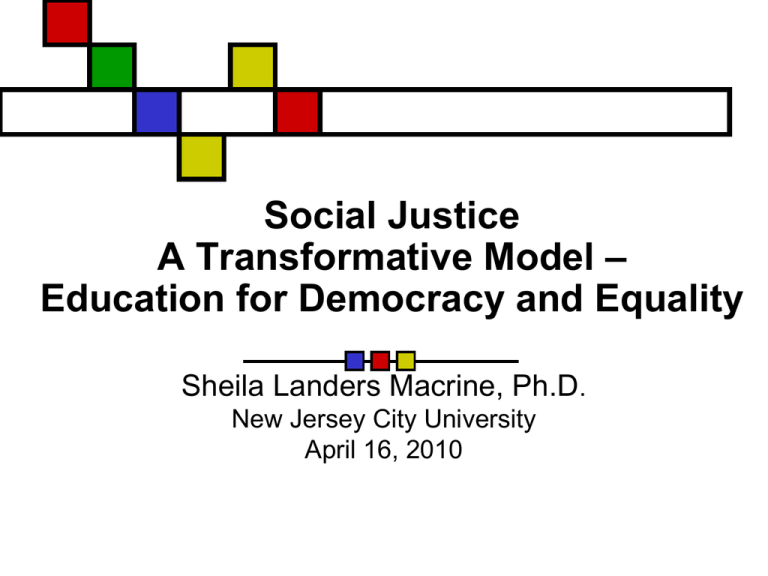
Social Justice A Transformative Model – Education for Democracy and Equality Sheila Landers Macrine, Ph.D. New Jersey City University April 16, 2010 Social Justice is… The practice of promoting and protecting human rights and responsibilities, with a particular emphasis on the economic and social rights of society’s most vulnerable groups - Human Rights Resource Center What is at issue? “Large numbers of new teachers describe themselves as distinctly underprepared for the challenges of dealing with the ethnic and racial diversity that they find in the classroom at a time when many schools have increasingly varied populations.” National Comprehensive Center for Teacher Quality, and Public Agenda, 2008 So, Why does preparing teachers for diversity matter? • a civic responsibility • a moral responsibility • the future of public education is at stake • the sociopolitical context demands it It matters because, in spite of it all, good teaching can help… “what teachers know and do is one of the most important influences on what students learn” (National Commission on Teaching and America’s Future, 1996) Reality of our Schools 37 million Americans in poverty 13% of America’s children are in poverty 60% of lunches served in school are free or reduced price Viewpoints in schools are Eurocentric and monocultural Produces racism and prejudice skin color, age, religion, physical and mental disabilities, sexual discrimination Some Questions we might ask… What does teaching for social justice really mean? Can American schools educate all students in a social/ equitable educational environment? How can academically rigorous, antiracist, critical, and pro-justice teaching be grounded in the lives of students and? Why is it necessary to explore in detail the dynamics of the multiple forms of oppression? [ableism, ageism, classism, homophobia, racism, sexism] When does Social Justice Begin? It begins when the Socially Dormant Conscience Awakens The path to social justice begins with gaining passion for the plight of non-privileged, underperforming students. We need to ask ourselves: Who tends to be privileged? What does it mean to be privileged in this way? Who tends to be marginalized? What does it mean to be marginalized in this way? Ways we tend to deny that privilege is occurring? What happens in the classroom? How can we take action in the classroom to interrupt these cycles of oppression? Richard A. McCormick, S.J. (1999). The Social Responsibility of the Christian. Blueprint for Social Justice LII(11), 1.] It can also begin with conversations among faculty and students by… Creating a “safe” but not “comfortable” space Engaging in “dangerous discourse” Sharing experiences through collaborative readings, research, program planning Social Justice embodies essential principles of equity and access to all opportunities in society in accordance with democratic principles and respect for all persons and points of view. Many of our National Teacher Associations Believe in and are committed to teaching for social justice, defined as improving the learning of all pupils and enhancing their life chances. For Example…… The American Educational Research Association (AERA) Social Justice Mission Statement As an elaboration of its general research mission, AERA commits: to promote diversity and inclusiveness in AERA; to promote social justice principles and policies in the conduct of education research; that is, in funding of research and training; to promote activities that foster a diverse community of education researchers; and to disseminate and promote the use of research knowledge and stimulate interest in research on social justice issues related to education. AERA-Adopted in June 2004, Reaffirmed January 2006 NCTM, 2000 Social Justice Statement The vision of equity in mathematics education challenges a pervasive societal belief in North America that only some students are capable of learning mathematics. THE NCTM’s first Standards document (1989, p. 4) asserted that : “The social injustices of past schooling practices can no longer be tolerated.” Unfortunately, some inequities persist in varying degrees and forms. For example, public schools in heavilyminority neighborhoods are less likely to be well-funded or have teachers who are highly qualified or certified in the subject they are assigned to teach math (Flores, 2008). National Science Education Standards The eight categories of national science education standards reflect a new emphasis on the themes of constructivist approaches, diversity, and social justice common throughout the education reform movement. National Association for the Education of Young Children’s Depth of Commitment to Inclusion and Diversity includes: Equity and justice concerns Antibias approaches to early childhood Cultural Competence Extensive opportunities to consider and apply Ethical values of caring, justice, and equity NAECY’S Recommends Targeting the population of 4-8 years old Increase tolerance and respect among cultures Decrease achievement gap Promote Multicultural Education and Social Justice that emphasizes addressing social questions and a quest to create a better society and worldwide democracy. It also focuses on a curriculum that highlights social reform as the aim of education. SOCIAL JUSTICE Ideological Societal Goals Increase tolerance and respect for one another’s cultures Close the educational achievement gap Recognize and promote recognition of inequities to empower our students so that they can empower those around them What is the role of higher education? Promoting teaching as a career within the academy Providing more enriching course work, both in the arts and sciences and in education Creating rigorous criteria for entering the profession but not just GPAs or passing scores on certification tests Vigorously recruiting underrepresented populations, both faculty and students Partnering with community colleges Partnering with urban schools To recruit students For professional development The Goal of a Social Justice Agenda Ana-Maria Villegas (2007) states, the “overriding goal of the social justice agenda in teacher education is to prepare teachers who can teach all students well, not just those traditionally well served by schools, so that as adults, all are able to participate in the economic and political life of the country.” AND that “teachers...have a moral and ethical responsibility to teach all their pupils, fairly and equitably.” Teaching for Social Justice Challenging deficit perspectives and promoting affirming views of diverse students is a precursor to building teacher candidates’ disposition to teach all students equitably” (Villegas, 2007). The use of culturally relevant pedagogy can be used as a mechanism for teaching for social justice. Curriculum can include: Lessons on oppression, unfairness, power & inequity Explore family history to create parent involvement Assessments that are appropriate for diversity Adopting a Culturally Responsive Curriculum Use funds of knowledge of students We Know Teacher Dispositions Affect Student Learning and Classroom Teaching Taylor and Wasicsko (2000) claimed that “there is a significant body of research indicating that teachers’ attitudes, values and beliefs about students…strongly influence the impact they will have on student learning and development” “Dispositions are in the long run, more important than knowledge and skills” (Wilkerson, 2006). ‘Surface’ Thinking (“Ostrich” Approach) Value-free education •Value-free education (i.e., view that education is neutral; reinforces the status-quo). •Equality (i.e., color blindness & culture blindness; assumes all students are treated in the same way; assumes assimilation to a dominant (“mainstream”) culture. •Labeling, sorting, and tracking students (i.e., deficit model for lowest tracks; remedial, watered-down curriculum prevails; low expectations). • Teacher-centered (i.e., Freire’s “banking model”; “sage on the stage”; prescriptive teaching methodologies; focuses on knowledge of content). • Learning about “Other cultures” (i.e., “we vs. they”; heroes and holidays approach; characteristics and privileges of dominant groups are invisible and unexamined). •Rhetorical intent and narrow outcomes (i.e., adequate yearly progress; only English-language standardized tests scores “count”; a narrow definition (autonomous models) of literacy). Social Justice Thinking Transformative Education •Transformative education (i.e., Education is part of the political-social process; education reflects social ideologies). •Equity (i.e., Conviction to and belief in equitable treatment; takes into account students of diverse races, genders, social classes, languages and cultures; critical of inequality and marginalizations).. •Equal educational opportunities for all children (i.e., Belief that all children can achieve to full potential; provides access to challenging academic curriculum; inclusive). • Student -centered (i.e., critical pedagogy, reflective practice, teachers as students/ students as teachers; focuses content & process). Critically examining Culture, including my own and how they come to be. (i.e., Deep reflection regarding assumptions, values, beliefs; • critically examines “whiteness”.) • Broad outcomes and multiple assessments (i.e., Follows students’ growth from where they started; solutions oriented after identifying a problem; builds coalitions through valuing and integrating families). We already believe in Teaching for Social Justice New Jersey City University strives to ensure that all teacher candidates are prepared to teach a diverse student population from a multicultural and global perspective. We also strive to foster a culture of awareness and acceptance among our faculty and students that enables our students to understand the role of diversity and equity in the teaching and learning process. So, how do we operationalize a Social Justice Agenda in our Teacher Education Programs Learning to Teach for Social Justice--Beliefs Scale: An Application of Rasch Measurement Principles. Ludlow, Larry H.; Enterline, Sarah E.; Cochran-Smith, Marilyn (2009). Entry and Exit Survey Items Respond to the following statements regarding your beliefs about teaching: 1. An important part of learning to be a teacher is examining one's own attitudes and beliefs about race class, gender, disabilities, and sexual orientation. 2. Issues related to racism and inequity should be openly discussed in the classroom. 3R . For the most part, covering multicultural topics is only relevant to certain subject areas, such as social studies and literature. 4. Good teaching incorporates diverse cultures and experiences into classroom lessons and discussions. 5R. The most important goal in working with immigrant children and English language learners is that they assimilate into American society. 6R. It's reasonable for teachers to have lower classroom expectations for students who don't speak English as their first language, 7. Part of the responsibilities of the teacher Is to challenge school arrangements that maintain societal inequities. 8. Teachers should teach students to think critically about government positions and actions. 9R. Economically disadvantaged students have more to gain in schools because they bring less to the classroom, lOR. Although teachers have to appreciate diversity, it's not their job to change society. 11R. Whether students succeed in school depends primarily on how hard they work, 12R. Realistically, the job of a teacher is to prepare students for the lives they ar likely to lead. Note. Likert-type rating scale for responses: 1 = strongly disagree: 2 = disagree; 3 = uncertain: 4 =agree: S strongly agree. R denotes reverse-scored items. Measiirement "There is no such thing as a neutral education process. Education either functions as an instrument which is used to facilitate the integration of generations into the logic of the present system and bring about conformity to it, or it becomes the ‘practice of freedom’, the means by which men and women deal critically with reality and discover how to participate in the transformation of their world." —Jane Thompson, drawing on Paulo Freire PAULO FREIRE It is impossible to talk of respect for students, for the dignity that is in the process of coming to be, for the identities that are in the process of construction, without taking into consideration the conditions in which they are living and the importance of the knowledge derived from life experience, which they bring with them to school. I can in no way underestimate such knowledge. Or what is worse, ridicule it.” Paulo Freire, Pedagogy of Freedom, 1998 The need for social justice in public education is so important at all levels Social justice is firmly embedded in multicultural education, and teachers are encouraged to work for social change in their classrooms, schools, and communities. -Sonia Neito The act of learning to read and write has to start from a very comprehensive understanding of the act of reading the world, something which human beings do before reading the words. -Paulo Freire Sonia Nieto Professor of Education at University of Massachusetts, Amherst, MA QUESTIONS??
